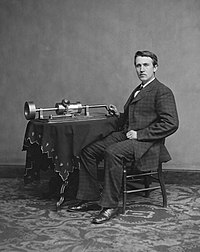
Photo from wikipedia
Introduction The trend of growing healthcare expenditures is unsustainable in many countries. The increasing pressure on healthcare budgets due to, for example, population ageing, increasing numbers of patients with chronic… Click to show full abstract
Introduction The trend of growing healthcare expenditures is unsustainable in many countries. The increasing pressure on healthcare budgets due to, for example, population ageing, increasing numbers of patients with chronic diseases (including multimorbidity), and the introduction of new pharmaceutical innovations, leads to political and societal debate. In particular, the introduction of expensive pharmaceutical innovations causes a lot of discussion and uncovers various paradoxes and dilemmas. There is a societal demand for innovation focused on existing medical needs (e.g., oncological, immune-mediated inflammatory, and orphan diseases), but the price of pharmaceutical innovations is a barrier to patient access. As a consequence, systems try to introduce measures or incentivize market forces to improve access for patients, while also containing budget impact. This does not always lead to better access and affordability. The aim of this study was to develop and test a conceptual decision-making framework for pharmaceutical innovations. Methods A retrospective study was conducted to identify the successes and challenges of decision-making systems across Europe. A conceptual decision-making framework, including proposed procedures, criteria, and health technology assessment (HTA) requirements (including tools), was developed and tested based on specific case examples (e.g. oncology and hepatitis C). Results The conceptual decision-making framework comprised an algorithm for relevant decision-making criteria (e.g. clinical evidence, medical need, cost-effectiveness, and budget impact). The algorithm was developed hierarchically and ranked the criteria in order to optimally inform various types of investment decisions. This novel approach to conducting budget impact analyses resulted in more realistic predictions of the burden of pharmaceutical innovations on healthcare budgets, and can be used as part of horizon-scanning processes to inform healthcare decision making. Results from selected case examples are presented. Conclusions The conceptual decision-making framework and proposed method for budget impact predictions will allow for more balanced future healthcare investment decisions.
Journal Title: International Journal of Technology Assessment in Health Care
Year Published: 2019
Link to full text (if available)
Share on Social Media: Sign Up to like & get
recommendations!